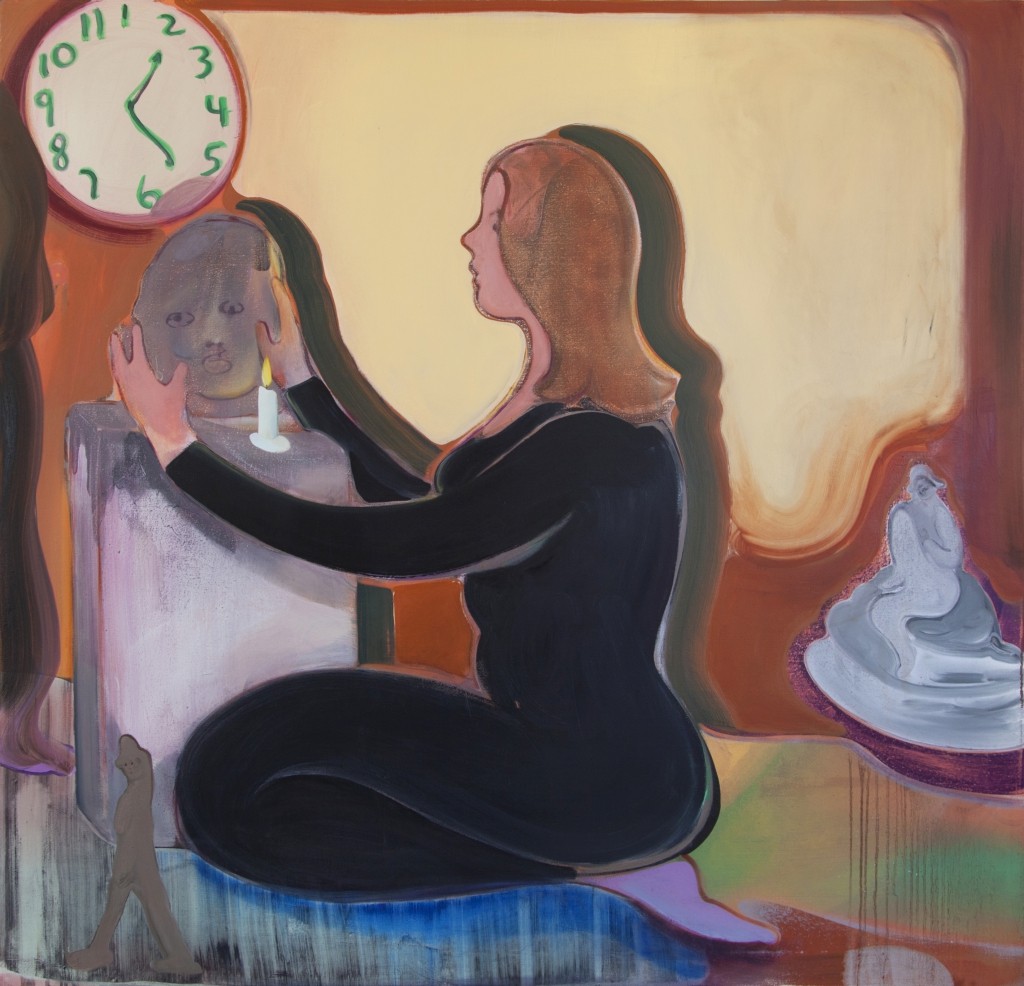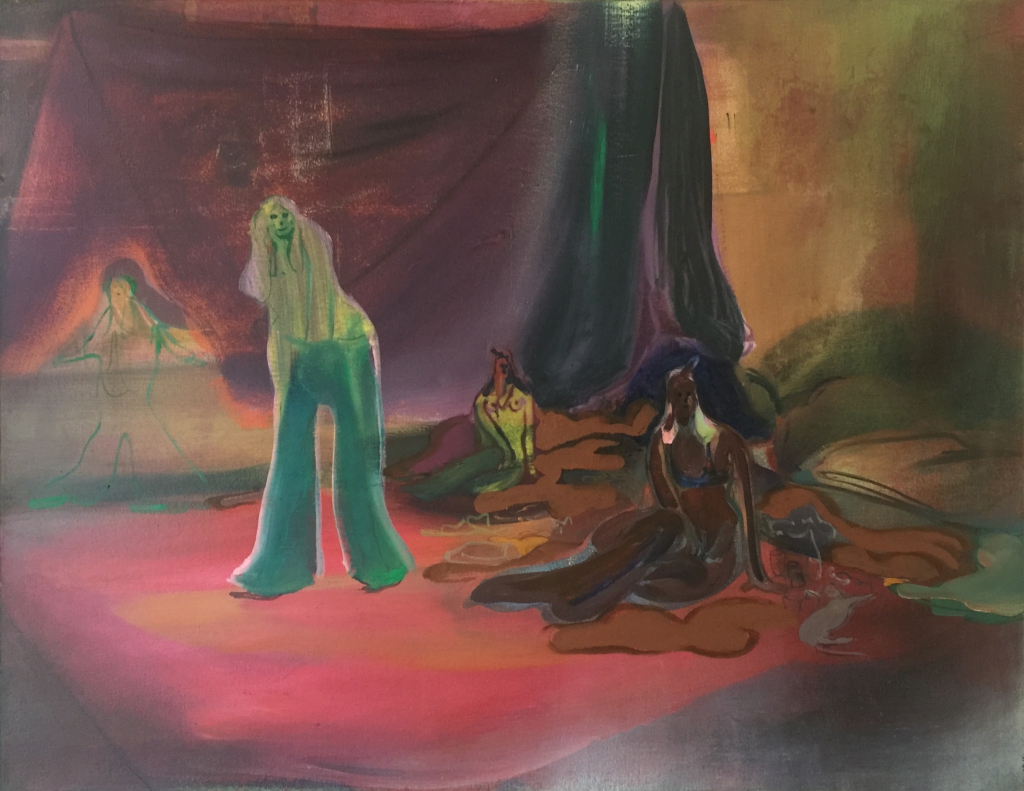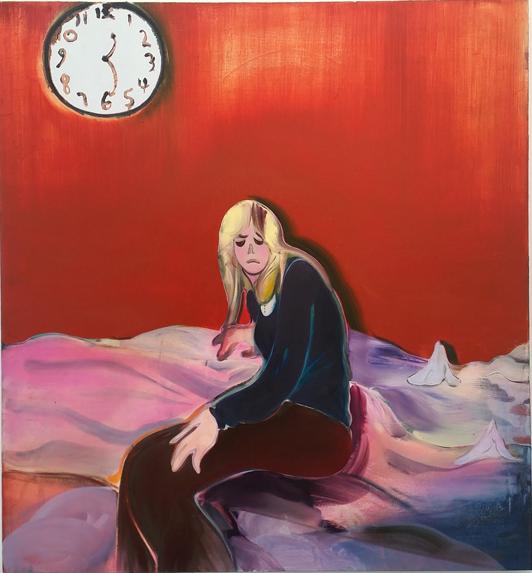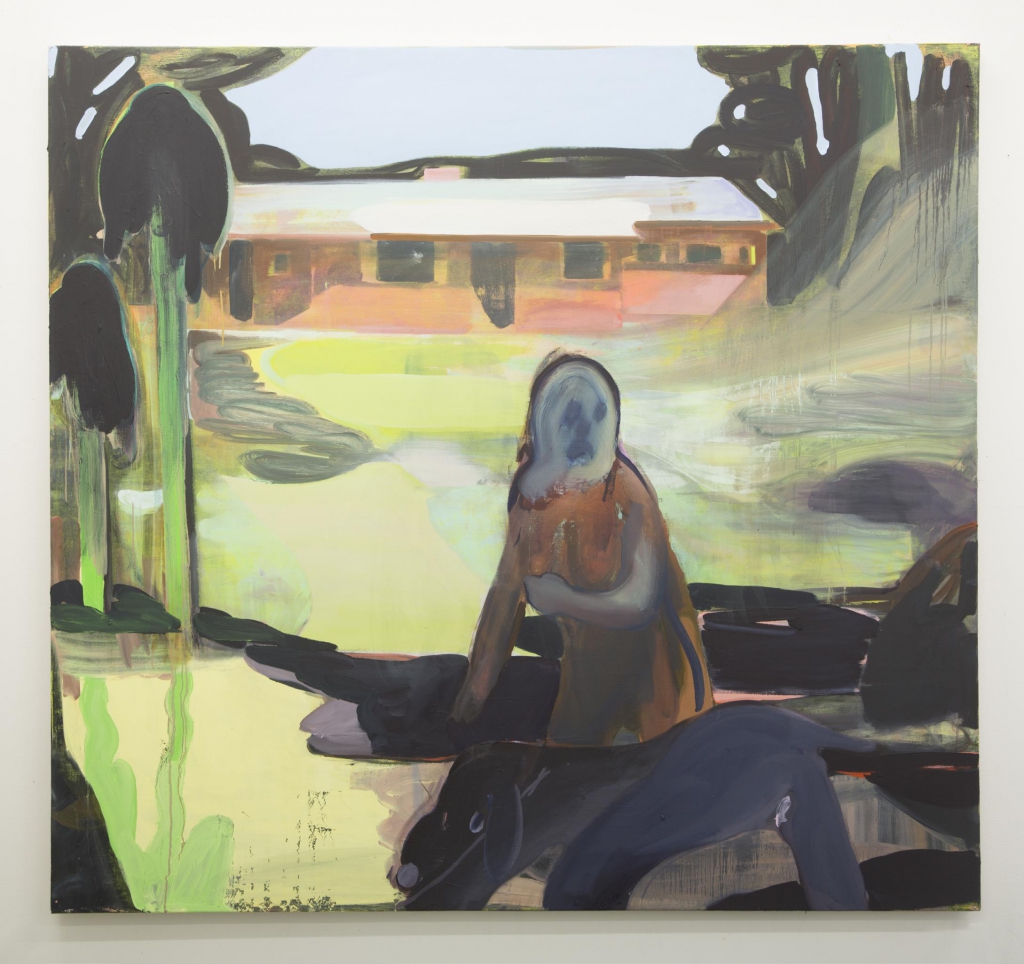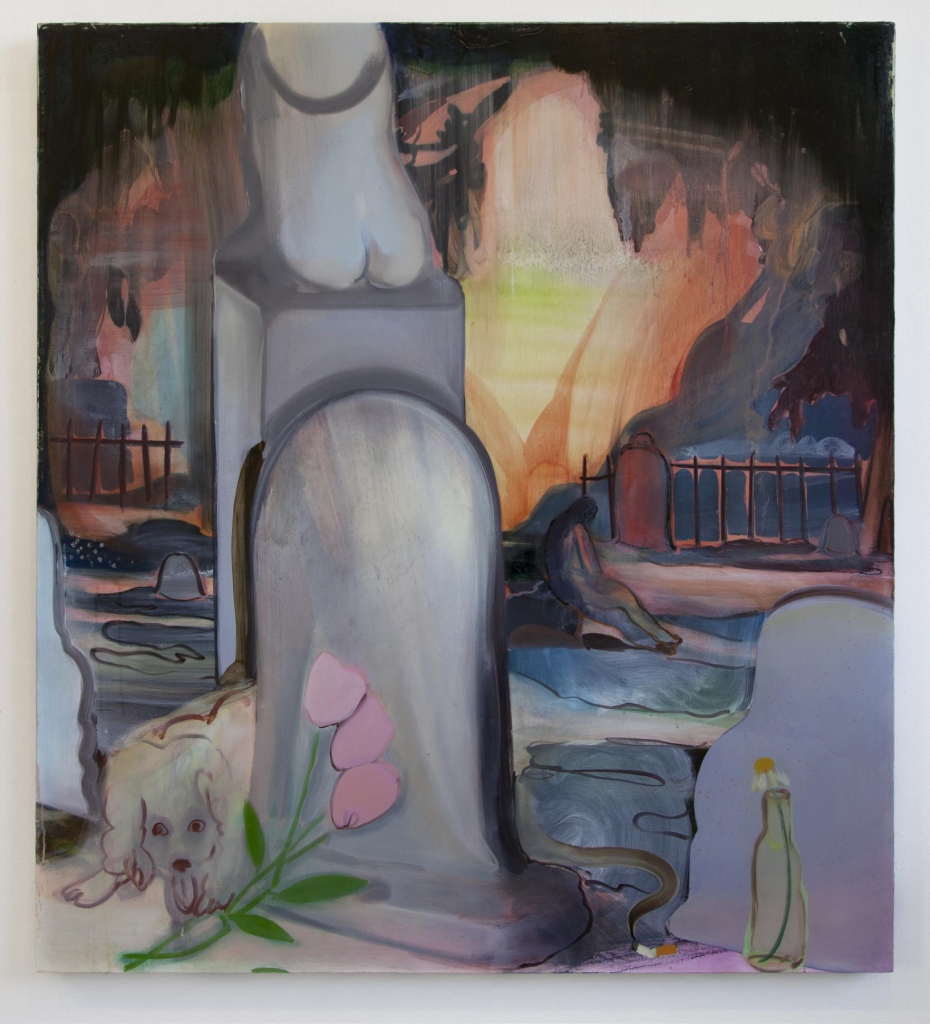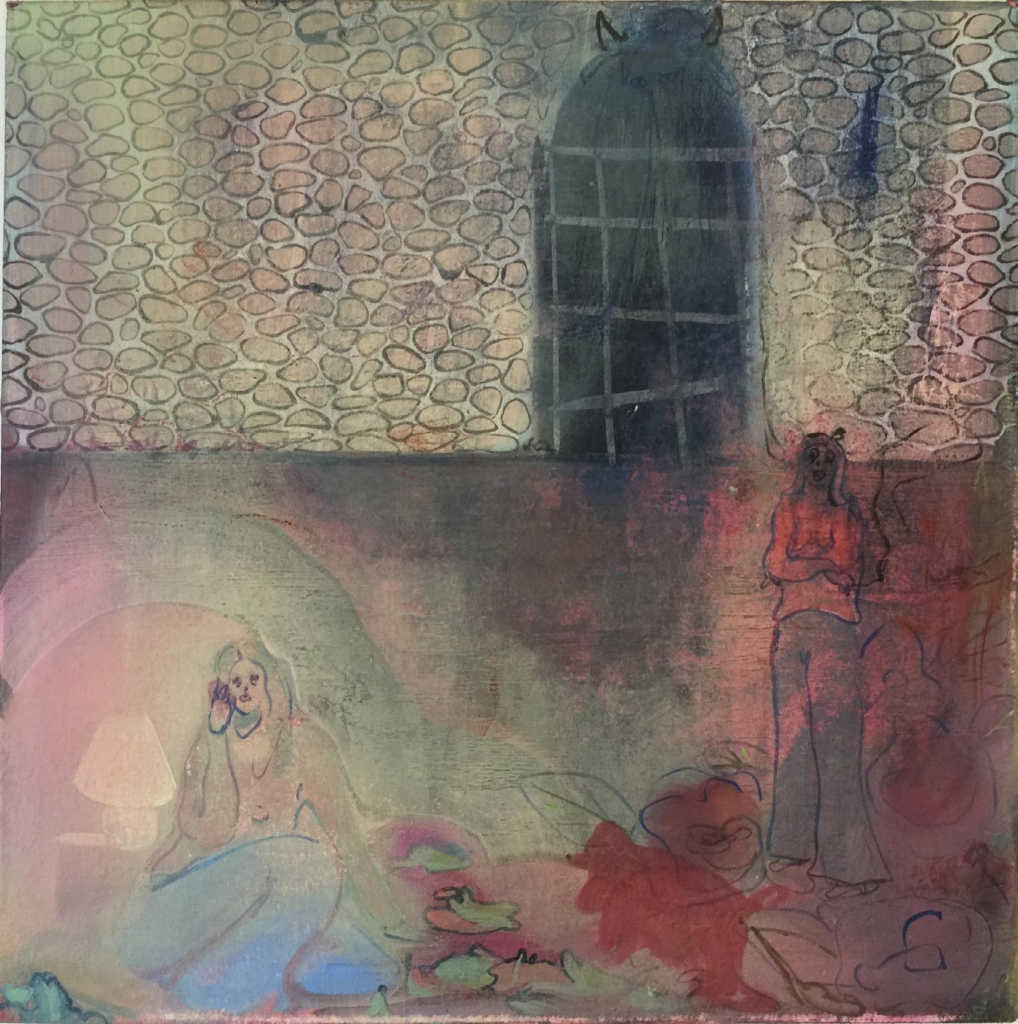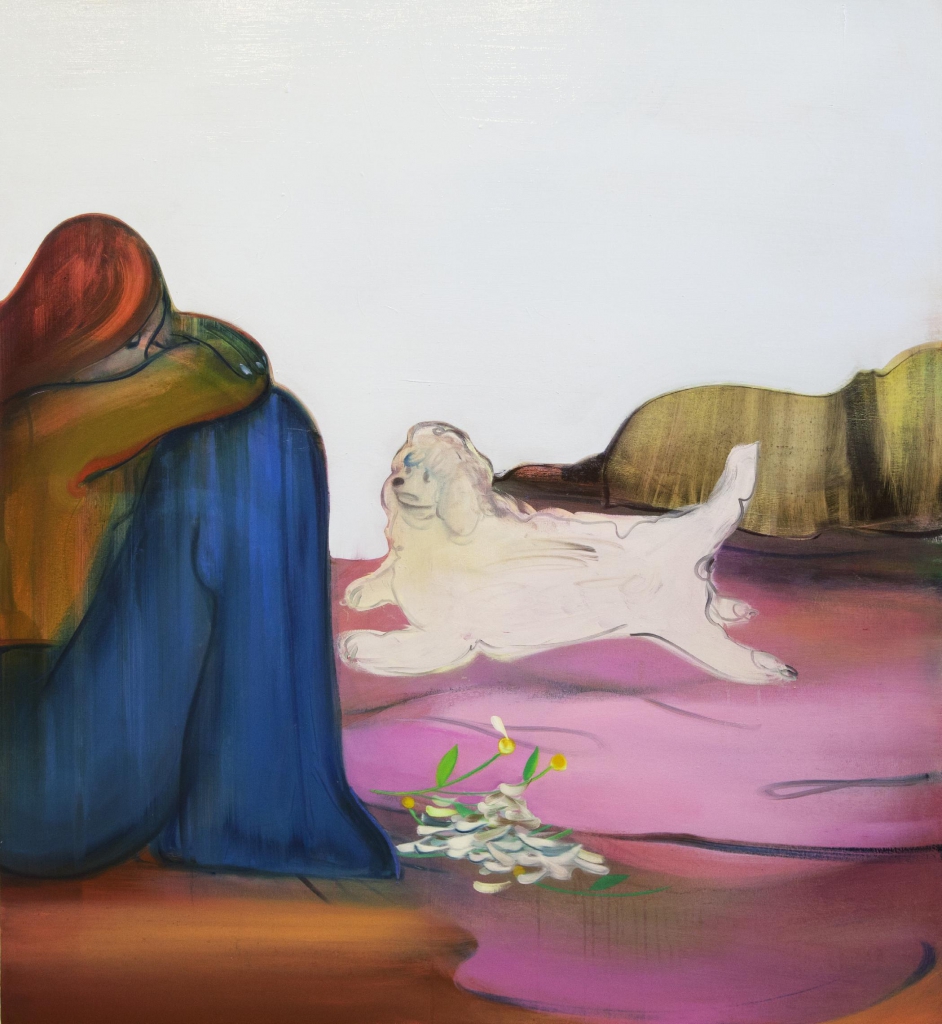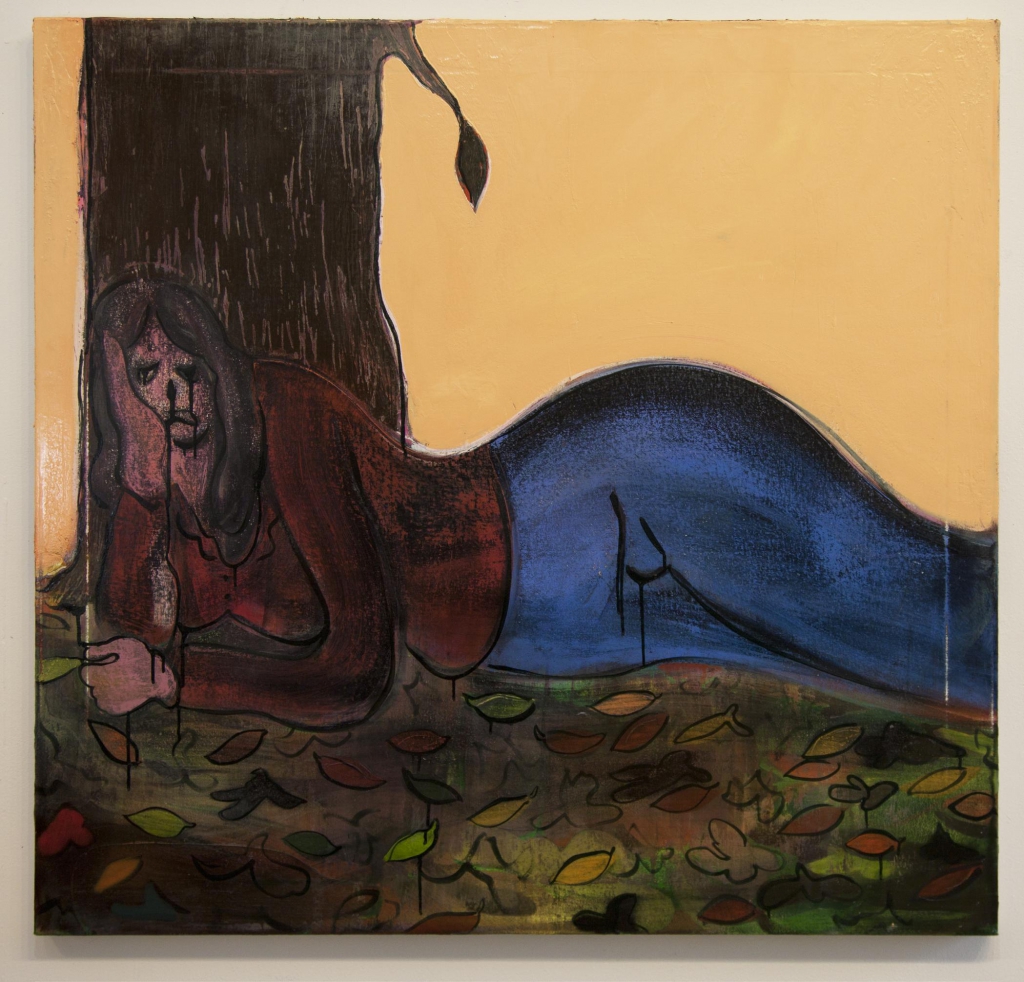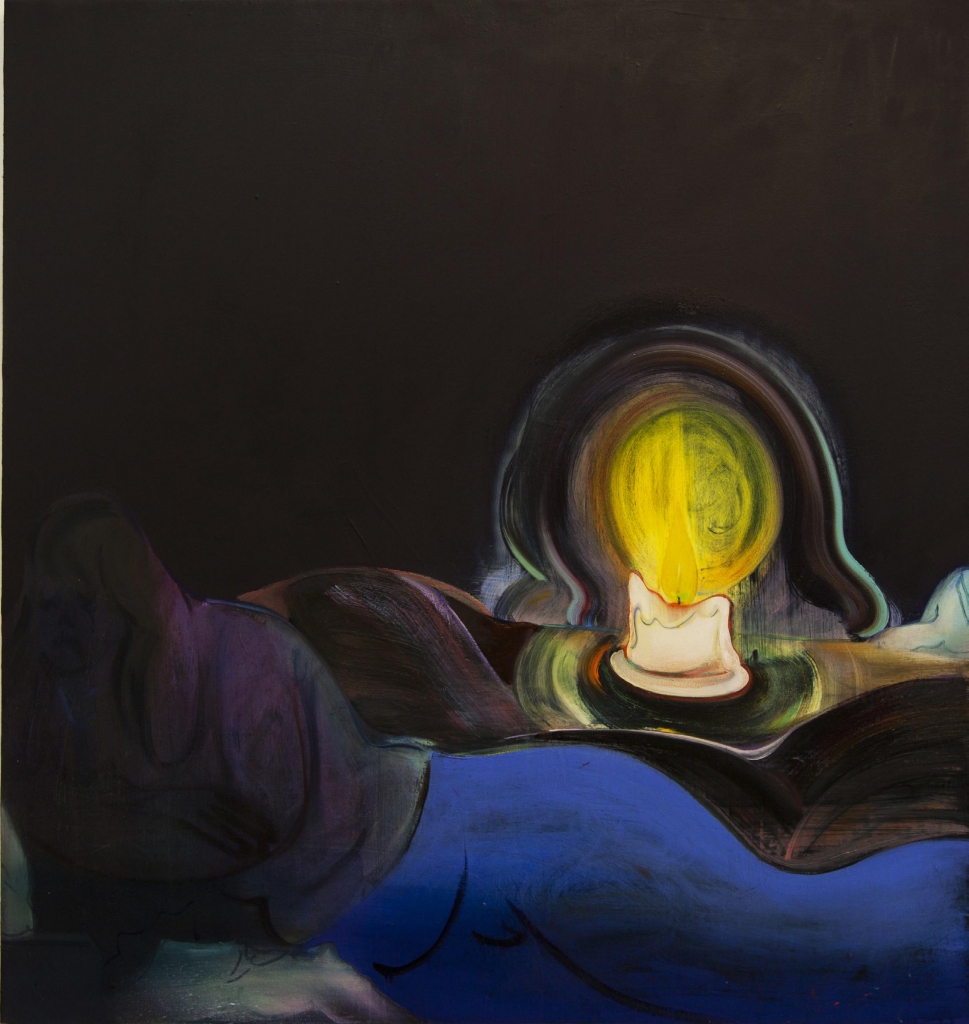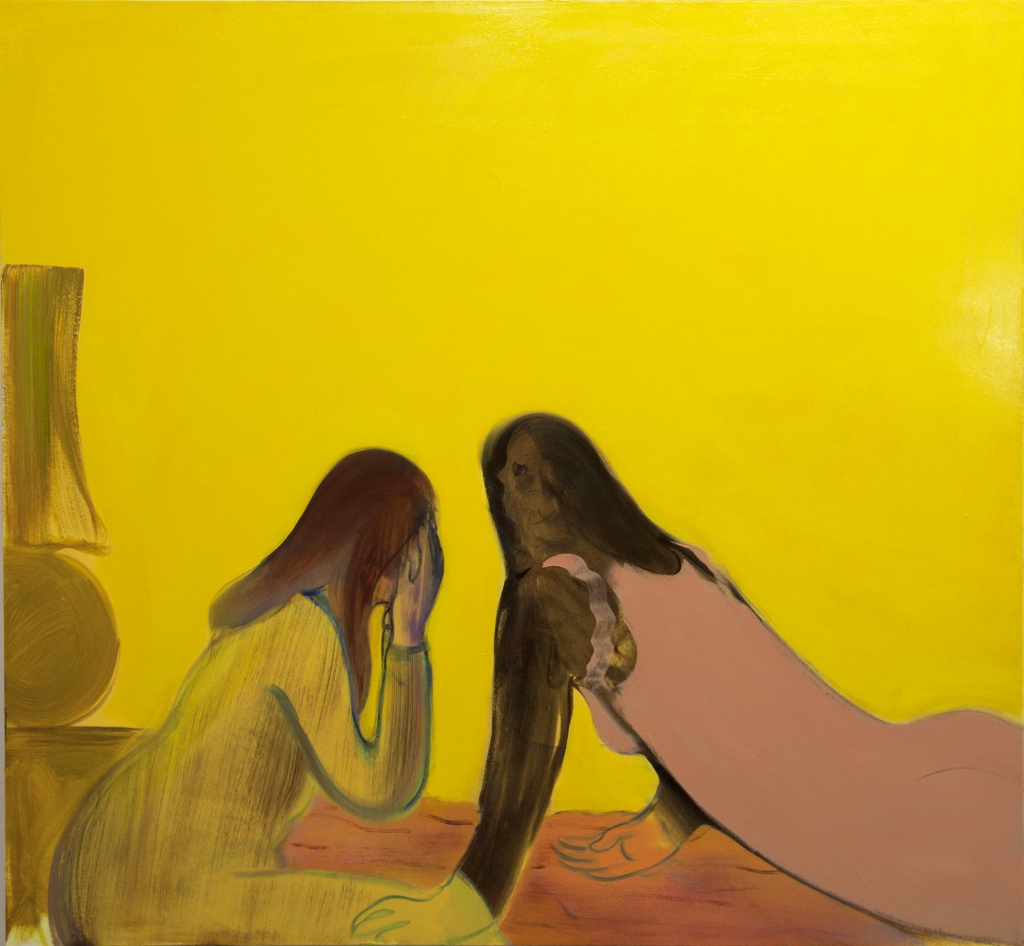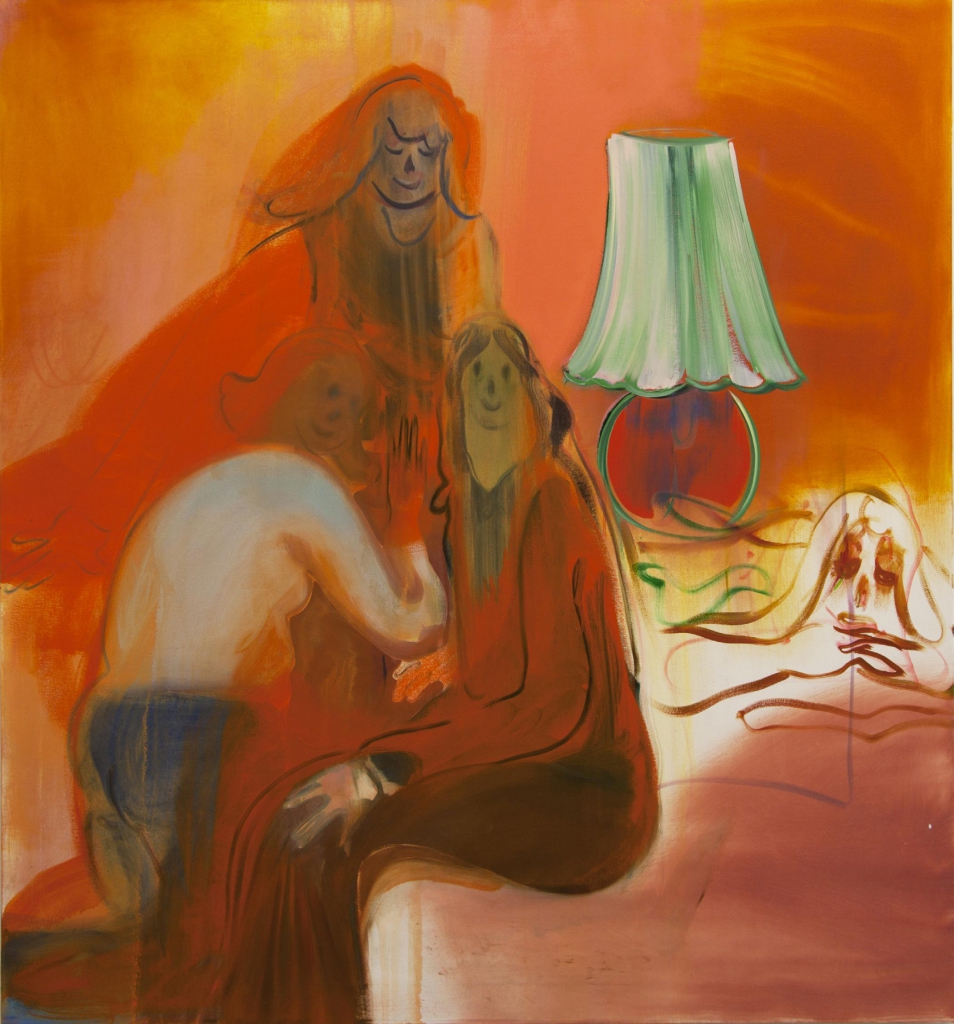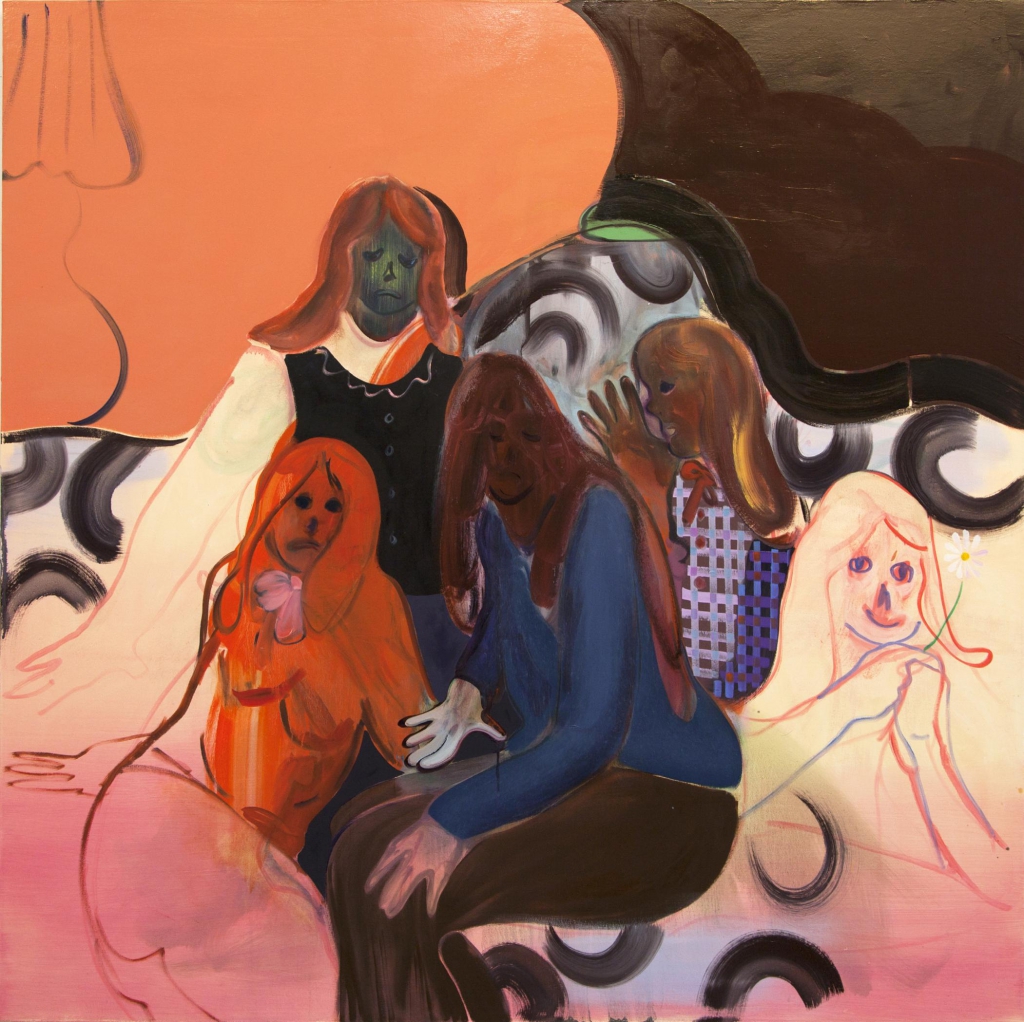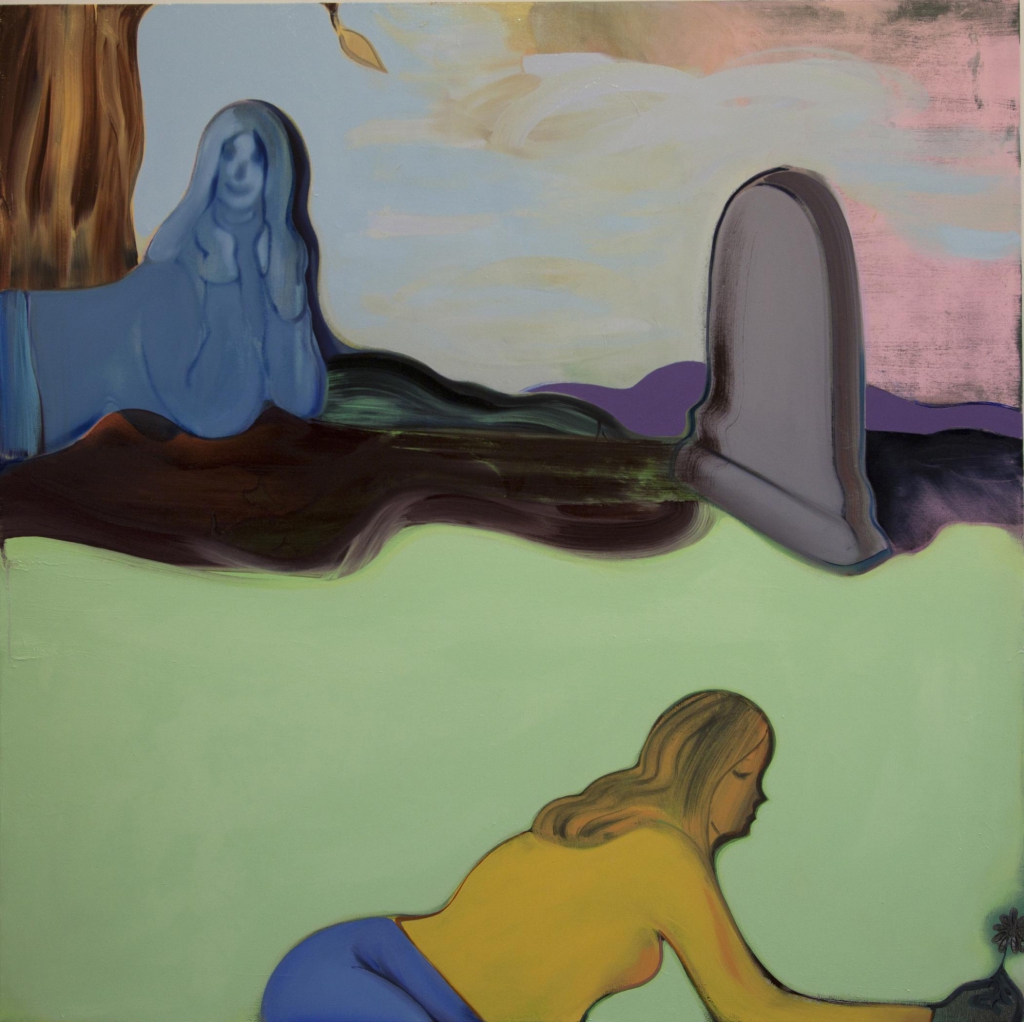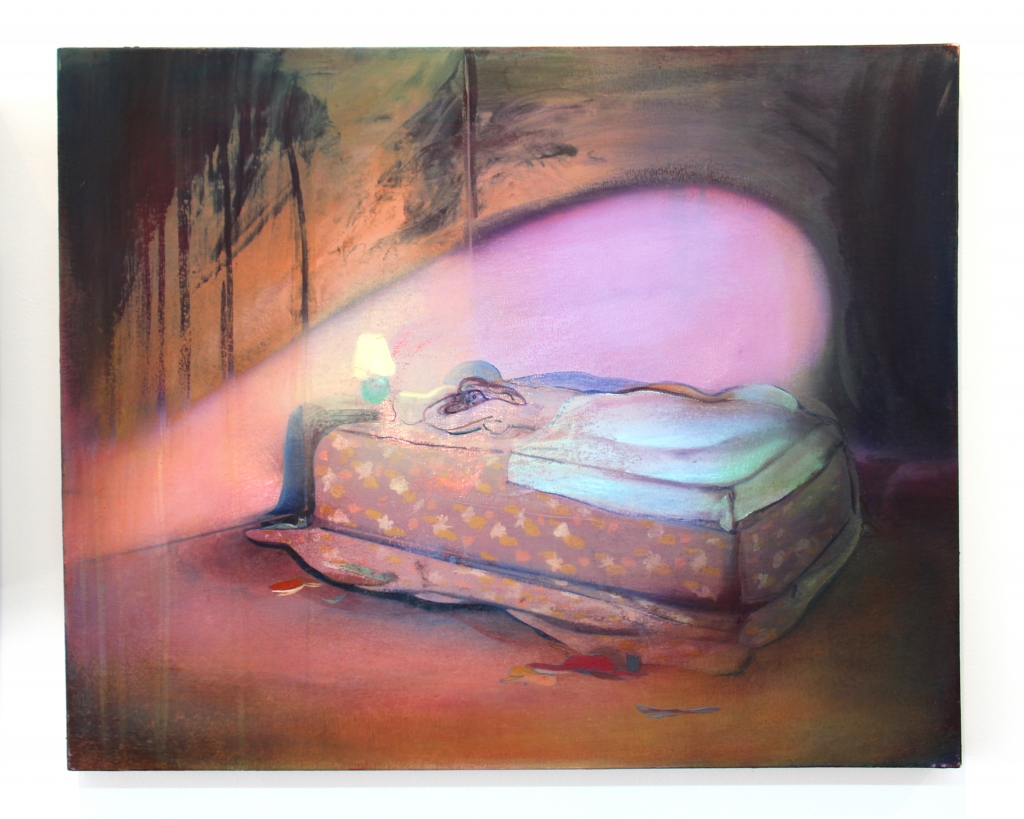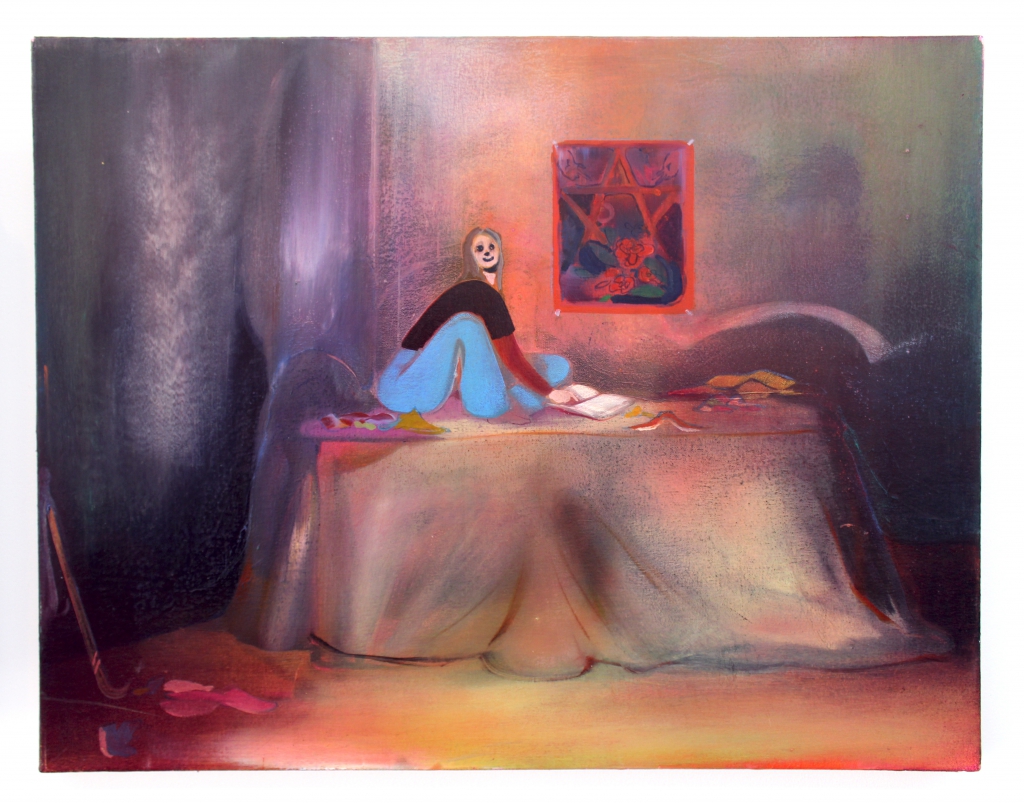HEIDI HAHN
New York Times
Review: Heidi Hahn at the Jack Hanley Gallery By MARTHA SCHWENDENER
The clock reads 12:30 in “Everything Left Is Plain” (2016), a pink-red painting in Heidi Hahn’s first New York solo show, “Bent Idle,” at Jack Hanley. It’s impossible to tell, however, whether this means afternoon or just after midnight. The same ambiguity runs throughout Ms. Hahn’s other paintings, which depict young women laughing and crying — or perhaps laughing and crying at the same time — in groups and pairs, or alone with a cat or a candle.
Ms. Hahn presents an impressive, cohesive body of work, although it rests on many formal precedents. The most obvious is the sinuous line and pungent coloring of Edvard Munch, the Norwegian painter who is featured in a Neue Galerie show that explores his influence on German and Austrian Expressionists. You can also feel in Ms. Hahn’s work the impact of recent figurative painters such as Sue Williams, Lisa Yuskavage, Judith Linhares and Dana Schutz. She draws fruitfully from nonart sources as well: the cheerful flowers and artificially ecstatic women in tampon commercials; the yellow smiley face and Kool-Aid man; even the flowing facial hair of the Wookiees from “Star Wars.”
By all appearances, Ms. Hahn is dealing with a painterly version of “Girls”-esque drama, with a 1970s aesthetic. Yet, the feelings are relatable: Broken hearts and betrayal; youthful love and raging hormones. In the same way Munch’s work served as an emblem of modern anxiety and neurosis, however, Ms. Hahn portrays life in the age of emoji and social media, where ambiguity often reigns.
Review: Heidi Hahn at the Jack Hanley Gallery By MARTHA SCHWENDENER
The clock reads 12:30 in “Everything Left Is Plain” (2016), a pink-red painting in Heidi Hahn’s first New York solo show, “Bent Idle,” at Jack Hanley. It’s impossible to tell, however, whether this means afternoon or just after midnight. The same ambiguity runs throughout Ms. Hahn’s other paintings, which depict young women laughing and crying — or perhaps laughing and crying at the same time — in groups and pairs, or alone with a cat or a candle.
Ms. Hahn presents an impressive, cohesive body of work, although it rests on many formal precedents. The most obvious is the sinuous line and pungent coloring of Edvard Munch, the Norwegian painter who is featured in a Neue Galerie show that explores his influence on German and Austrian Expressionists. You can also feel in Ms. Hahn’s work the impact of recent figurative painters such as Sue Williams, Lisa Yuskavage, Judith Linhares and Dana Schutz. She draws fruitfully from nonart sources as well: the cheerful flowers and artificially ecstatic women in tampon commercials; the yellow smiley face and Kool-Aid man; even the flowing facial hair of the Wookiees from “Star Wars.”
By all appearances, Ms. Hahn is dealing with a painterly version of “Girls”-esque drama, with a 1970s aesthetic. Yet, the feelings are relatable: Broken hearts and betrayal; youthful love and raging hormones. In the same way Munch’s work served as an emblem of modern anxiety and neurosis, however, Ms. Hahn portrays life in the age of emoji and social media, where ambiguity often reigns.
